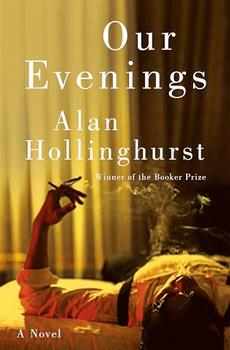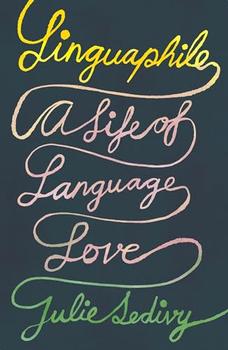Summary | Excerpt | Reviews | Beyond the Book | Readalikes | Genres & Themes | Author Bio

The Secret Life of the Natural History Museum
by Richard ForteyChapter 1
Behind the Galleries
This book is my own store room, a personal archive, designed to explain what goes on behind the polished doors in the Natural History Museum. All our lives are collections curated through memory. We pick up recollections and facts and store them, often half forgotten, or tucked away on shelves buried deep in the psyche. Not everything is as blameless as we might like. But the sum total of that deep archive is what makes us who we are. I cannot escape the fact that working for a whole lifetime within the extravagant building in South Kensington has moulded much of my character. By the same token, I also know the place rather better than any outsider. I am in a position to write a natural history of the Natural History Museum, to elucidate its human fauna and explain its ethology. There are histories that deal with the decisions of the mighty, and there are histories that are concerned with the ways of ordinary people. An admirable history of the Natural History Museum as an institution, by William T. Stearn, was published in 1981. What Stearn largely left out was an account of the achievements, hopes and frustrations, virtues and failings of the scientists who occupied the "shop floor"- the social history, if you like. My own Dry Storeroom No. 1 will curate some of the stories of the people who go to make up a unique place. I believe profoundly in the importance of museums; I would go as far as to say that you can judge a society by the quality of its museums. But they do not exist as collections alone. In the long term, the lustre of a museum does not depend only on the artefacts or objects it contains-the people who work out of sight are what keeps a museum alive by contributing research to make the collections active, or by applying learning and scholarship to reveal more than was known before about the stored objects. I want to bring those invisible people into the sunlight. From a thousand possible stories I will pick up one or two, just those that happen to have made it into my own collection. Although I describe my particular institution I dare say it could be a proxy for any other great museum. Perhaps my investigations will even cast a little light on to the museum that makes up our own biography, our character, ourselves.
At first glance the Natural History Museum looks like some kind of cathedral, dominated by towers topped by short spires; these lie at the centre of the building and at its eastern and western corners. Ranks of round-topped Romanesque windows lie on "aisles" connecting the towers which confirm the first impression of a sacred building. Even on a dull day the outside of the Museum shows a pleasing shade of buff, a mass of terracotta tiles, the warmth of which contrasts with the pale stucco of the terraces that line much of the other side of the Cromwell Road. Courses of blue tiles break up the solidity of the façade. The entrance to the Museum is a great rounded repeated arch, flanked by columns, and the front doors are reached by walking up a series of broad steps. Arriving at the Natural History Museum is rather like entering one of the magnificent cathedrals of Europe, like those at Reims, Chartres or Strasbourg. The visitor almost expects to hear the trilling of an organ, or the sudden pause of a choir in rehearsal. Instead, there is the cacophony of young voices. And where the Gothic cathedral will have a panoply of saints on the tympanum above the door, or maybe carvings of the Flight from Egypt, here instead are motifs of natural history-foliage with sheep, a wolf, a muscled kangaroo.
The main hall still retains the feel of the nave of a great Gothic cathedral, because it is so high and generously vaulted. But now the differences are obvious. High above, where the cathedral might display flying buttresses, there are great arches of steel, not modestly concealed, but rather flaunted for all they are worth. This is a display of the Victorian delight in technology, a celebration of what new engineering techniques could perform in the nineteenth century. Elsewhere in the Natural History Museum, a steel frame is concealed beneath a covering of terracotta tiles that completely smother the surface of the outside and most of the inside of the building; these paint the dominant pale-brown colour. Only in the hall are the bones exposed. This could have created a stark effect but is softened by painted ceiling panels; no angels spreadeagled above, but instead wonderful stylized paintings of plants. It does not take a botanist to recognize some of them: here is a Scots pine (Pinus sylvestris),* there is a lemon tree (Citrus limonum), but how many Europeans would recognize the cacao plant (Theobroma cacao)? Many visitors, and most children, don't even notice these charming ceiling paintings. Their attention is captured by other bones: the enormous Diplodocus dinosaur that occupies the centre of the ground floor, heading in osteological splendour towards the door. Its tiny head bears a mouthful of splayed teeth in a grinning welcome.
Excerpted from Dry Storeroom No. 1 by Richard Fortey Copyright © 2008 by Richard Fortey. Excerpted by permission of Knopf, a division of Random House, Inc. All rights reserved. No part of this excerpt may be reproduced or reprinted without permission in writing from the publisher.




Only when we are no longer afraid do we begin to live
Click Here to find out who said this, as well as discovering other famous literary quotes!
Your guide toexceptional books
BookBrowse seeks out and recommends the best in contemporary fiction and nonfiction—books that not only engage and entertain but also deepen our understanding of ourselves and the world around us.